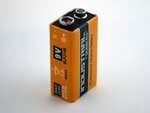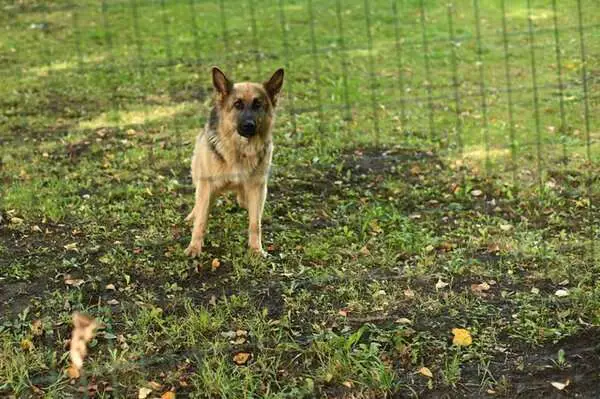An invisible fence keeps your dog safe and protected at all times. Getting a professional installation may cost you a fortune, so you should consider a do it yourself invisible fence installation. Setting up an invisible fence is not challenging if you follow the steps correctly and perform every action with great detail.
Let’s find out how to set up the invisible fence without professional help.
How to Install A Do It Yourself Invisible Fence – Step By Step:
An invisible fence is an underground fencing system for the pets that uses radio signals to keep the dogs to the designated area like a yard or away from areas like swimming pool, garden, or patio. The outdoor hidden fence is created by burying the boundary wire a few inches underneath the ground all around the property. The wire buried within the ground carries low-level signals which are harmless.
Are you finally ready to install a do it yourself invisible fence? Then have a look at the step-by-step guide on setting it up. First of all, determine the area you plan on covering. The basic system includes a transmitter having the potential to enclose the entire region.
Step 1: Draw Perimeter

Use graph paper and plot the yard while drawing the area you plan on covering. Make sure to keep the corners rounded because 90-degree angles can confuse your transmitter. Make sure to keep the transmitter within indoor, protected areas. It would be best if you evaluated how close you plan on keeping the dog towards the boundary without even receiving a warning. Adjust the distance over the indoor transmitter. Some systems work to around 30 feet from the boundary and as close to the foot.
Avoid keeping wires close to other wires. If you are unaware of the cable’s location, then ask your local utilities regarding the installation.
Avoid keeping transmitters within the shed or barn as there is a risk of fire or electric shock leading to transmitter exposure to water or weather conditions. Keeping all these things in mind, get started with doing it yourself invisible fence:
Step 2: Install the Transmitter
Install your transmitter in the marked areas. Make sure to ground it as recommended by your manufacturer. Check out the graph paper plot that you made.
Now lay down the wire all over the proposed boundary. You can cancel the signals by twisting down the wires. It is useful when you plan to run a wire between the transmitter and the limitations or obstacles like patio, swimming pool, barn, or other containment areas. Finally, connect the boundary wire ends with the transmitter and then turn on the system.
Step 3: Put the collar

Next up, test your pet’s collar to ensure the collar is working properly. This collar should be able to emit audible alerts near its boundary. Put the collar around the neck of your dog and take it into the field for testing.
Step 4: Place the wire
Once everything is working, start cutting the trench 1 to 3 inches deep on your planned boundary. Do not keep the boundary wire in close approximation with the chain-link fences. If your kit comes with limited wire, you might need more wire to add to the wire connectors.
For splicing wires, strip both the wire ends and insert them in the connector and then twist. Now test it by pulling down the wires and ensure there is a solid connection.
Apply silicone caulk around the wire connector. Once the compound is dry, wrap down the cables using electrical tape.
Step 5: Ground the wire

Use a circular saw having a masonry blade for cutting the trench for crossing surfaces like pavement or concrete surfaces. Now patch the material using the appropriate item.
Some systems are vulnerable to environmental factors like power surges or lightning strikes. So, it’s best to ground the system for protection against damage.
What to Consider When Choosing A Do It Yourself Invisible Fence?
Are you considering looking for factors when choosing a do it yourself invisible fence? Then dive in to look at the critical factors.
Area Coverage:

Transmitter within the invisible fence determines the total area an electric fence will cover. Some transmitters can cover around 1 acre of area, while others can wrap approximately 20-25 acres of area and more.
Wireless invisible fences are meant for circular-shaped boundaries, while they are not an excellent choice for rectangular or odd-shaped yards. Wireless fences are best for small areas, and they don’t work well for sloped areas.
In-ground invisible fences are meant for customized area, shape, and size. They can cover around 5 to 100 acres and are effective for all terrains and landscapes.
Containing Vs. Repelling:
The common goal of keeping the dog within the invisible dog fence is to maintain them within the yard. This system creates a barrier for your dog by sending corrections to the dog’s collar when it reaches near the boundary.
Repelling is also a factor considered by dog owners. You can use invisible dog fences underground for repelling the dog. It keeps the dogs out of the garden, patio, pool and allows you to loop the entire restricted area with ease.
Electronic Collars and Multiple Dogs:

The electronic collar is no doubt an important thing to consider when buying an invisible fence. Make sure the collar is big enough and is comfortable for your dog. For an electric collar, make sure to check its waterproof nature, durability and allows your dog to stumble upon it.
Moreover, check that the electric collars come with disposable batteries or are they rechargeable. If the electric collars come with batteries, check whether they are proprietary batteries or non-proprietary ones. Proprietary batteries are costly and difficult to find, while non-proprietary ones are cheaper and easy to find.
You should also check whether you want to set up an invisible fence for multiple dogs. Check whether your system allows the inclusion of more dogs. Make sure the fence you have can easily accommodate more dogs and receiver collars.
Static Correction Levels:
The modern electric collars for dogs in the market are pretty safe. They are designed with safety features that prevent pets from being hurt. Static correction in any college of invisible fence is used for training the dogs, so whatever fence you purchase, your dog might receive some electric stimulation at some point.
Two important things to consider for static correction levels are whether they are adjustable or not. You should be able to adjust the level of intensity of static correction to achieve maximum results using minimal electrical stimulation.
Moreover, does it come with a beep for training mode or warning mode allowing you to familiarize the dog with new boundaries?
Battery Backup and Surge Protector:

Whether you plan on installing wireless or underground fences, you need your transmitter to be plugged in an outlet for it to work. You need a battery backup plan, too, so that you have a backup to prevent the fence from stopping and leaving the dog unprotected at times of power outage.
You can also opt for a surge protector, which is a device that works with in-ground fences. This device protects the system against damage that might occur due to lighting leading to damage to the transmitter.
Handheld Remote:
Having a fence that comes with a handheld remote allows you to easily control it at all times, making it a portable choice. This offers users added flexibility.
Installation:
Are you seeking ways of installing an invisible fence? Wireless invisible fences are easy and quick to set up. You can set it up in a few hours. In-ground fences, on the other hand, take extra time and need elbow grease for installation. It all depends on the acres you plan on covering and takes around 1-2 days.
Professionally-Installed Vs. Do It Yourself Invisible Fence:
Are you still thinking about whether to opt for a professionally installed vs. do it yourself invisible fence? Decide it for yourself by reading this out.
The goals of doing it yourself vs. professionally installed invisible fence are similar, but the factors which make them different include:
- The boundary wire is a crucial factor in making invisible fences. Self-installed boundary wires are prone to breakage as they are 20-gauge wire rather than 14–16-gauge wire used in professionally installed invisible fences.
- Professional installation of invisible fences is more reliable but expensive than a do it yourself invisible fence.
- When installing an invisible fence yourself, you need to get your hands on the kit, which offers enough instructions for the pets to get trained. However, professionally installed invisible fences come with proper training of the dogs, which allows them to stay away from the boundary.
- Professionally installed invisible fences come with replacement receiver batteries of around three months to two years. However, making an invisible fence requires the replacement of batteries after just 2-3 months. Replacing batteries, again and again, each year with more than one pet can increase the overall cost of the invisible fence system. Some batteries are rechargeable which makes them quite appealing.
- The do-it-yourself invisible fences come with a warranty of around 1-2 years, while the professionally installed invisible walls come with a lifetime warranty.
Pros and Cons of Wired and Wireless Invisible Fences:
Are you wondering what the pros and cons of wired and wireless invisible fences are? Then have a look at both of them.
Wired Invisible Fence

A wired invisible fence is also known as an underground fence or in-ground fence where the wire is buried a few inches underneath the ground. Invisible fences come with a transmitter so that the homeowners can know about the signals. The pet wears the collar, which reacts whenever the cats or dogs come close to the boundary wire. The chime results from the collar of the pet once it is close to the wire.
Pros:
- It is cheaper equipment compared to wireless systems.
- It shapes the boundary wire as per need around the obstacles, for example, swimming pools.
- Underground perimeters will not alter
Cons:
- Comparatively hard to set than the wireless fences.
- The wire might break and is challenging to refix.
- Tree roots and other underground obstacles might make installation difficult or impossible in certain yard parts.
Wireless invisible fences

Wireless invisible fences make use of a central transmitter which is similar to the wired one. These fences send radio signals over the boundary creating a containment zone that can be adjusted according to the size.
Similar to the wired fence, pets wear a receiver collar that responds to its signals. The tone warns the pets when coming in close contact with the boundary, and as soon as the pets leave the safe zone, they feel static correction.
Pros:
- Highly portable.
- No digging, no wires, no complicated installation
- Easy to assemble.
- No more hassle of in-ground obstacles like tree roots or sidewalks.
Cons:
- No customization of boundary shape for fitting the layout of your yard.
- It might make it difficult for pets to recognize the boundary.
- The border might fluctuate due to the signal, which can confuse the pets.
- Comes with expensive receiver/ transmitter equipment.
FAQ
Does an Invisible Fence Have to Make A Complete Loop?
No, the answer is no need to make a complete look by the invisible fence. However, there are certain advantages as well as disadvantages of completing a fence loop. Preparing the entire continuous loop results in increased voltage over the fence line with power pushed in dual directions.
Can an Invisible Fence Be Installed Above Ground?
Yes, you can install invisible fences above ground in the yard immediately and quite quickly. Above ground, fences come with boundary wire stapled with the already present fence line or above the ground.
Can A Dog Run Through an Invisible Fence?
Yes, dogs can efficiently run through an invisible fence. They are ideal for keeping the dog running at all times without the need of the owner.
Does an Invisible Fence Have to Be Buried?
It’s better to bury the invisible fence wires around 1-3 inches deep within the trench. This protects them against lawn mowing activity or other lawn activities.
Does Invisible Fence Work in The Snow?
Yes, the invisible fence will work in the snow if the wires are of good quality. If you invest in a low-quality wall fence, it won’t work in cold weather as it can suffer from environmental factors.
Conclusion
There you have it. Now you have become well aware of how to do it yourself invisible fence. Start it with the essential steps and things you should consider while setting up the invisible fence for your dog. Hope you end up with a proper containment for your dog!


